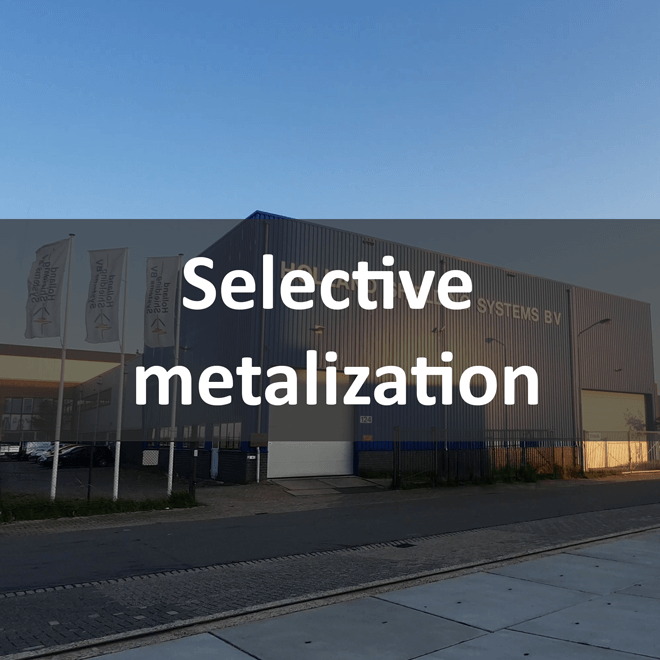- Contact Us
- |
- Jobs
- |
- About Us
- |
- |
-
- Personal information
- Organization
- Quotes
- Address book
- Login
- Don't have an account? Sign-up
Selective metalization
- Home
- Selective metalization

When only specific parts need to be provided with a conductive layer, rather than the entire electronics housing.
Since 1922, the word metallization has been synonymous with surface coatings. Since the invention of this technique, in response to corrosion problems in steel constructions, successful generations of highly respected principles have led to today's expertise in the technology of surface coating. These developments can be attributed to the dissemination of information about metalization and rapid responses to the needs of the industry.
During the joint high-vacuum coating process via evaporation, the metal first melts and then creates a "cloud" of aluminium vapor which is deposited on a polymer surface, resulting in a thin metal film.
In a perfect vacuum condition (10-4 Torr), the metal molecules will gravitate to the polymer surfaces, without encountering resistance from air or gas particles, so that the polymer is covered with an even layer of metal. Before the high-vacuum coating process can take place, the polymer surfaces have to be leveled and insulated by an initiation layer (varnish) in order to allow the metal layer to be deposited properly and to improve adhesion of the next transparent protective layer (varnish).
To Properly Withinthe metal layer to allowfor bed and the adhesion of the transparent protective layermaking (fe: varnish).
The treatment of the initiation layer undertakes three basic features, enabling higher quality results:- Aesthetic features
- Insulating function
- Functional interface on the points of the adhesion layer.
Used for aesthetic purposes, in order to make clear today is undertaken by means of UV products due to their brilliant and distinctive glass from the metal or aluminum layeris reflected.
The treatment of the protective layer of varnish protects the aluminum and metal oxidesat low and represents the final phase coating, which is a highly coherent multiple layerpackage.
